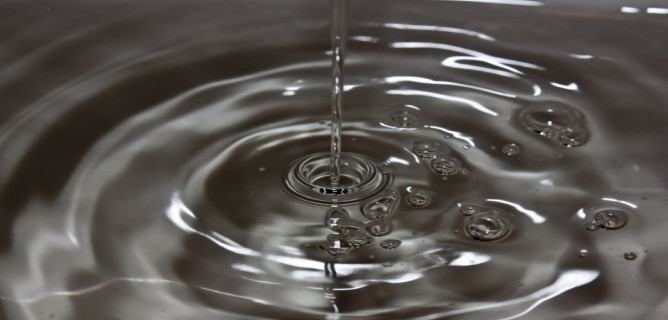 Read this article posted on HousingZone.com conserving water without sacrificing design and performance!
Read this article posted on HousingZone.com conserving water without sacrificing design and performance!
Now is the time for remodelers and designers to outfit their design/selection centers with high-efficiency plumbing products and to start advising their clients on how they can save water in their homes when undertaking kitchen and bathroom projects without sacrificing performance and design. With water and sewer rates rising, and the threat of water shortages in many areas of the country, contractors can no longer ignore the importance of weaving water-saving ideas into initial design plans.
One key factor in accomplishing this is to raise the importance of water conservation with clients right from the very beginning. And that is not to suggest that contractors need to supply lists of tips and factoids such as, “cutting a minute off normal showering time” or “turn the water off when brushing your teeth.” While these are all solid water-conserving tips, they require homeowners to alter their lifestyles to actually save water. To ensure that a bathroom/kitchen remodel will be as water efficient as possible, high-efficiency plumbing products (toilets, showerheads, faucets) should be specified.
In the not-so-distant past, it could be a tough sell for a remodeling contractor to include water-saving plumbing products in the plans. Options in both designs and shapes were fairly limited and reliable performance was often in question. This is probably the overriding reason why water conservation has taken a back seat for many years in the remodeling industry.
Today’s high-efficiency, or water-conserving, plumbing products have come a long way since the early 1990s when their reputations really took a hit. Contractors and designers can choose with confidence from many new styles, colors and price ranges. Better yet, there is now a credible “third party” resource when seeking top performance in high efficiency plumbing products – that being the five-year old WaterSense label from the Environmental Protection Agency. This product label, similar to Energy Star for indicating energy efficiency, helps individuals identify plumbing products that meet EPA criteria for water efficiency and reliable performance. And, in most cases installing these high efficiency products is the same as standard models.
With all this in mind, there are three basic high efficiency plumbing product categories to discuss with clients. The end goal is to always include water-saving fixtures, faucets and showerheads into bathroom and/or kitchen remodeling jobs, while still delivering a quality experience for the homeowner –reliable performance, great design and water savings.
1. Replace older 3.5 gallon-per-flush or higher toilets with new HETs
High-efficiency toilets flush with only 1.28 gallons of water per flush or less — a 20 percent savings over standard 1.6-gallon models. Major brand name toilets will offer affordable models and various flushing systems. HET flushing systems can include pressurized air, electricity, dual flush, and “tower flush” gravity systems.
HETs can reduce toilet water consumption by as much as 30 percent when replacing 3.5-gpf toilets. Here again, individuals are not limited in toilet options. Today’s HETs are available in both 1- or 2-piece models, and in a variety of shapes, designs and colors to match any bathroom décor.
2. Use water-conserving “performance” showerheads
Standard showerheads feature a water flow rate of 2.5 gallons per minute (gpm). Performance showerheads use 1.75 gpm for a 30 percent savings on shower water, and they’re designed to provide a strong, enjoyable showering experience. Many models feature multi-spray options, bold finishes and contemporary to traditional designs.
3. Install faucets with “low-flow” pressure-compensated aerators
When it comes to making a “big” impact on water savings for “little” cost, nothing surpasses a high-performance faucet aerator. Standard faucets feature a water flow rate of 2.2 gpm. That flow can be reduced by 30 percent with a simple 1.5 gpm pressure compensated aerator. Most faucets today can be purchased with a low-flow aerator already installed. And, because the aerator is a small universally applied component, faucet options are not restricted. Designers and remodelers can offer their clients several faucet configurations — single hole, centerset, widespread, deck-mount or wall-mount — traditional and contemporary designs, and in brushed or polished finishes.
The bottom line regarding a bathroom or kitchen remodeling project with water conservation being one of the end goals is to change out older pre-1990 plumbing products with quality high-efficiency products. By following these three steps involving toilets, showerheads and faucets, the average family of four could save up to 39,000 gallons of water per year. That’s enough water saved annually to fill a swimming pool and then some, not to mention the savings on water bills which will ultimately make homeowners happy.
To learn more about high-efficiency residential plumbing products that save water without sacrificing performance, visit www.epa.gov/watersense.
Ed Del Grande is a Master plumber, pipefitter and contractor; and Kohler Co. spokesperson with more than 30 years of experience. He is host of his own television show Ed the Plumber on the DIY Network, program host on HGTVPro.com, and author of a syndicated Q&A newspaper column for Scripps Howard News Service. He recently earned his LEED Green Associate certification.
Courtland Building Company would love to help you plan your green home, call us today: (281) 932-4494
Courtland Building Company would love to help you plan your green home, call us today: (281) 932-4494
Visit our website: www.courtlandbuildingcompany.com Follow Us on Facebook – Twitter – LinkedIn


